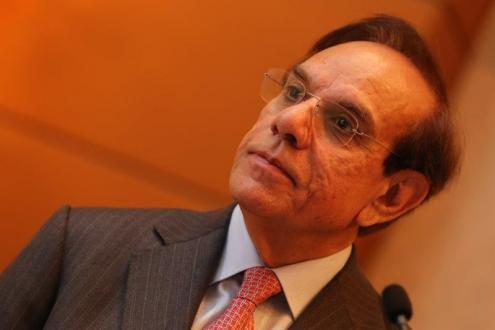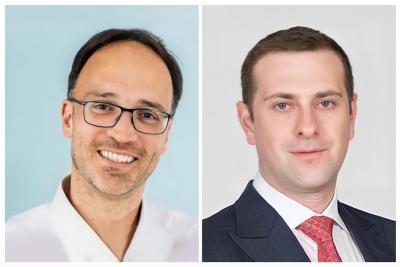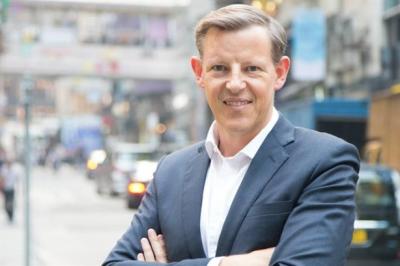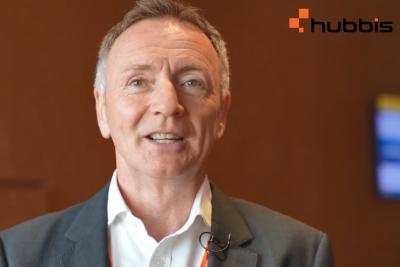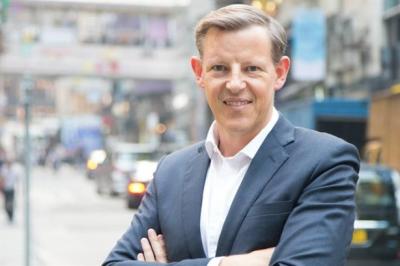Strategy & Practice Management
Malik S. Sarwar Takes the Big Picture View of New Age Wealth Management
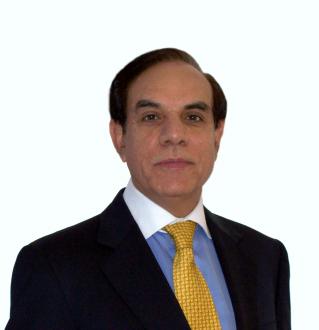
May 13, 2020
As the Founder of K2 Leaders and a veteran of investment and private banking, Malik S. Sarwar has since he began work in the early 1980s pretty much seen it all… except, that is, a global pandemic. Armed with what he has experienced, including in prominent roles in Merrill Lynch, Citibank and HSBC, and extrapolating across the post-coronavirus age ahead, whatever that might be, Sarwar ‘met’ with Hubbis by video call to imagine the impact this pandemic will have on the world of wealth management, and to also step back to observe developments in wealth management to date, and where he believes the industry might be heading.
“This crisis will cause many banks and firms to struggle,” he begins. “I would say that simply to survive, let alone thrive, in wealth management you will need to be either a global bank, or a very strong local or regional bank, or a very robust, specialised boutique firm. Anything in between is going to be severely challenged.”
He notes how HNW and UHNW clients have seen the devastation wrought on their portfolios by the market chaos in recent months. Many are wondering perhaps how their banks and advisors did not foresee such chaos, even though of course, this is a Black Swan event. Many are wondering why they did not heed their own nagging worries about excessive valuations, or risk exposures created by excess complexity of products they might have bought, or leverage that had taken on with the aim of rocket-fuelling returns. Recency bias of markets reaching new heights caused many to lower their guards against a market jolt.
“It is certainly the case,” Sarwar comments, “that those private wealth clients likely to emerge relatively less battered are those who constructed well-balanced portfolios based on solid financial planning principles, perhaps working with those banks and advisors who have really driven clients towards this approach. And those banks and firms that have assembled the best platforms, invested in market research, advisory, and client education will be best positioned to help their clients during this crisis and will emerge stronger potentially after it is over. The ability to re-balance portfolios dynamically is a significant differentiator in times of great stress.”
Crashes are seldom accidents
Sarwar casts his mind back over many years to the early 1980s onwards, since when he has worked in financial services and wealth management through the October 1987 crash, the Asian Financial Crisis of 1997, the dot com bubble in 2001 and then the global financial crisis of 2008/9. “There are several commonalities of all those crises,” he comments. “We all get ahead of ourselves, we all believe this time is different, and we then believe it will bounce back, so fear and greed take over quickly once again, which of course is dangerous.”
Sarwar believes that the major wealth management players will succeed only if they have a stronger commitment to and discipline surrounding financial planning, asset allocation, portfolio rebalancing, and goals-based investing. “And they need to take the long-term view,” he adds, “and I remain utterly convinced that as the months and years ahead pan out, a more disciplined, rigorous approach to wealth management is essential.”
And while passive investing had been the norm - given that most active managers were inadvertently closet trackers, says Sarwar - and one that Sarwar himself has adopted in the past decade, looking ahead he believes there will be more emphasis on the search for value after the widespread value destruction we have all witnessed. Now that clients are more cost-conscious and measure ‘value-for-money’ with greater rigor, they will only pay active managers if they are convinced of generating superior returns.
“Selectivity is vital,” he comments, “so for example we have continued to see Amazon’s expansion amidst this global crisis, along with firms in biotechnology and pharma, while other sectors of business have been under immense stress. There is a great opportunity now for the research community, asset managers and wealth managers to promote greater selectivity and for RMs to apply that within the confines of more robust and disciplined financial planning.”
‘Nobody knows nothing’
Sarwar also remarks how crises arrive unexpectedly, and that is especially true of this pandemic-induced catastrophe. “People have spotted the signs of impending financial crisis in the past – for example, Elaine Garzarelli of Shearson Lehman shortly before the 1987 crash, then John Paulson who made his fortune from shorting the MBS and sub-prime market prior to the GFC, and so forth. But they got it spectacularly right once and then never again.”
“And in this case, nobody could have imagined when such a pandemic might strike, so the old New York expression of ‘nobody knows nothing’ remains true to this day, and should to some extent guide us, especially when we think we have things in order and think we have all the answers. The reality is nobody is consistently right, so we need to heed the old mantra of growing wealth slowly but surely, that must be the core lesson out of all this.”
Drivers for growth
Sarwar also looks at the wealth management business from what he terms a demographic and technographic standpoint. “There are three key drivers of growth and change ahead,” he observes. “First, the millennials are getting wealthier, and they love to be served remotely, they want to have apps that speak to them, that are simple and efficient. They do not seek direct advice in an office, or branch, they do not see much added value in that method. Wealth firms, therefore, need to up the digitisation of their offering, the hybrid or robo-plus advisory approach that many leading firms have been investing in. But they need to go further than they have – even the leading financial firms are far behind the curve versus the Big Techs, who when they decide to complete – for example, we could imagine Amazon Bank – will bring about incredibly fierce competition.”
Women are also more and more central to private wealth, both creating it and controlling it, which must inevitably lead to a more focused offering from the providers, as well as more women taking up leading wealth management roles to cater to this rapidly expanding group of clients.
A third key factor is impact investment in the form of ESG and other more environmentally-focused protocols for a sounder allocation of investible capital. “Here,” Sarwar warns, “we must be wary of simple greenwashing as a gimmick to attract these types of investors. Wealth firms must truly embrace this as part of their DNA henceforth.”
Three sources of revenues
Sarwar also remarks that wealth management firms must improve all three of the core ways in which they make revenues – transactional, discretionary management and advisory.
Addressing the transactional side first, he argues that as the banks offer execution services, they know that some of their self-directed clients will make good decisions, and some poor decisions, but as long as they disclose the risks and follow regulatory requirements, this is essentially a perfectly fair approach, as after all the clients can choose to do what they wish with their own funds.
A greyer area, however, is when the banks offer easy credit to help these clients leverage up. “I personally believe,” he cautions, “that while credit might be good for the banks’ bottom lines, it is very often questionable for the wealth management clients and can often result in exaggerated losses.”
Nevertheless, while this view is shared amongst many of the more conservative participants in the wealth industry, the reality is that the private banks are indeed banks and lending is ultimately their core proposition. “Leverage should therefore be approached cautiously,” Sarwar advises, “by the banks and the clients, so that it does not distort what should be well-disciplined wealth management. The providers have a responsibility to educate and advise their clients of the dangers of leverage, especially if related to more complex or illiquid underlying assets, in my view.”
Pushing DPM and advisory
Sarwar also believes that the DPM model, based on established goals, should be driven as enthusiastically as possible by the providers, also with a strong emphasis on educating clients to its merits.
“This is a professional service delivered by professionals,” he comments, “so it follows a carefully designed process of assessment, financial planning, asset allocation, portfolio rebalancing, and it allows the investors to focus on what they do best as owners or entrepreneurs, and allows them to step away from the emotional-driven buying and selling decisions, often based on reactions and poor information. Banks and other wealth management firms should really be pushing this as hard as possible in the months and years ahead.”
The advisory proposition should also be boosted, encouraging clients to take this route and to apply the research and advice the firm can curate in a more disciplined manner, so the clients follow and adhere to a fairly rigorous, pre-determined asset allocation, rather than simply reacting to the vacillations of the markets or geopolitics. “The providers must adapt their approach to advisory,” Sarwar states, “so that the advice they offer is more appropriately aligned with a methodology that they help the clients monitor and adhere to.”
Asia drags its feet
Sarwar notes that while the leading private banks and wealth firms have for some years been driving DPM and advisory forward well in the US and Europe, in Asia, there remains a strong preference for self-directed investment.
“While I believe the banks should downplay the transactional side, they make a lot of their money here, so probably the attitude remains that the clients have signed the disclosures and they know what they are getting into, so fair game,” he observes. “However, I believe that is short-sighted in the medium- to longer-term perspective, and they should be doing far more to drive Asian clients towards both DPM and advisory, or at the very least educate them towards a more disciplined approach to self-directed investing.”
Words of advice
Wearing his veteran-of-the-industry hat, Sarwar also has some words of advice for the RMs plying their trade today. “My first recommendation is continuous self-enhancement as a professional and as a person,” he reports. “The acronym of ICC stands for Integrity, Competence, Compassion. Integrity is the first key attribute, as the RM must strive to always do right by the client, even if it is not directly or immediately beneficial for their pay check. They should always advise clients against doing something if they believe it to be risky or ill-judged, even if it means foregoing a lucrative sale.”
The other area is to constantly enhance their competency. They must be able to filter the incessant torrent of information.
“There is just so much information flowing constantly, but so little knowledge,” Sarwar observes. “RMs must stay on top, filter, use the firm’s house view, become like the financial equivalent of a medical consultant, and leverage their resources so they become even more competent, thereby helping their clients sort through all the mists of information out there, so they can focus clearly on what is really important to them and their investments.”
The third key attribute for the RM is developing their compassion. This is primarily emotional intelligence, the ability to understand the client, figure out their concerns, their hopes, their pain points, their goals, as well as seeing these clients in their true context of their lives and their family situations.
Younger not always better
Sarwar’s final comment is to encourage younger talent into the industry, but without losing the experience of the industry veterans. “While younger RMs can be cheaper, there is clearly some negative bias amongst banks and others in terms of letting the older RMs go,” he notes. “However, that can be a short-term cost gain, and I believe the industry needs a better balance between the younger talent that can be nurtured and high-quality, more seasoned professionals who can help nurture this younger talent. Only a handful of banks do that well, and it is an opportunity for the industry.”
He remarks that this is especially important in times of crisis. “For example,” he reports, “I learned that some 20% of the wealth management community frontline in the US had never experienced a market crisis. Greater balance, a more holistic approach to the different generations and a more client-centric model will be required not only to thrive but even to simply survive.”
Bubbles and balloons
Many of Sarwar’s observations on the wealth management industry ring truer today than they have in recent years, when the benign global market conditions have simply been too much of a lure for many HNW and UHNW investors, some of whom unfortunately will have lost significant chunks of their wealth in these past few months.
Whether the industry can collectively heed some of this advice remains to be seen. Whether more wealthy clients will take a more conservative approach also remains in question. The reality is that the world of investments is rather like a balloon – squeeze in one area, and it bursts out in another area.
Staying positive
Sarwar, however, remains optimistic. “My life has shown me the value of realistic optimism,” he says on closing the discussion, “but also of balance. If the wealth management community – the providers and the clients – can maintain hope and equilibrium, they can have a great future. Let’s hope they do.”
Getting Personal with Malik Sarwar
Sarwar was born in in Pakistan to a military family and was educated in military schools before studying engineering in Lahore, Pakistan, and then an MBA in Iran with a Harvard Business School affiliate. Married in Pakistan, he went to the US for post-MBA specialisation in Corporate Finance at New York University.
His career on Wall Street almost did not happen. His father was unhappy to see him ditch his tangible engineering education and follow the path of ‘funny money’, i.e. banking. Sarwar explained to his father that banking requires less brain power and you make more money, so he will be able to spend more time with the growing family. His father relented unhappily.
Thus, Sarwar started his career in the wealth management business with Merrill Lynch on Wall Street, during which time he moved to Asia and the Middle East, also with Merrill. He later joined Citibank in Singapore, and then worked with the bank in New York. After 7 years at Citi, he joined Permal Group and later Abu Dhabi Islamic Bank as Head of Wealth Management. In 2011, he joined HSBC in Hong Kong as Global Head of Wealth Sales Management/Wealth Development until 2017. He then moved back to New York and founded his own firm, K2 Leaders.
He has fond memories of all the major roles, and of HSBC he comments that it was an ideal position as he could aim to combine the best of the east and west, pulling them together in a culturally sensitive manner and thereby, he believes, enhancing the credibility and quality of the bank’s wealth management offerings for clients across the globe. “‘Client first’ dominated our thinking,” he explains. “It all started with the client’s needs and expectations.”
He says he has only one major regret when looking back over the decades of a successful career that began all the way back in the 1980s. “The disappointment that I had from start to today is the ‘say-do’ gap. In every firm I encountered a similar scenario – the one-hour management meeting of which 50 minutes was spent on what we were doing and how, and 10 minutes perhaps on the clients. In short, the industry remains somewhat of illusory, talking about putting the customer first, but struggling to embrace that proposition at the core. At the height of GTC, he was called a ‘bankster’- not a banker, by an irate client. “That is also why I give a lot of time communicating about why and how to help clients in this business, in the hope that the gap will close.”
“The question to ask is ‘who is the Disney or Ritz of banking?’ No firm comes to mind, even though there are pockets of excellence around the world,” says Sarwar. “The opportunity for the wealth management industry is to anticipate client needs and exceed their expectations, learning from outside the industry.”
Sarwar and his wife have four children, who arrived neatly in the form of boy, girl, boy, girl and who are all in their 20s and 30s today. And they have two grandchildren.
Luckily for the parents, all four children are in the New York area, and his wife is working in London. “That is where I am today for this video call,” he reports, “keeping my wife here company during lockdown.”
True to his heritage, Sarwar is a passionate supporter of the Pakistan cricket team. “That has been a character-building journey over the years,” he quips, “as sometimes they manage to snatch defeat from the jaws of victory. Of course, being hugely talented, they have shown occasional brilliance in coming from behind to win in 1992 and 2017. Javed Miandad’s last ball – the winning sixer in Sharjah - is the best the world has ever seen.”
He reports that roughly one-third of his time these days is also spent encouraging education for girls and women in Pakistan, working with DIL (Developments in Literacy) and also with the US firm Acumen, with whom he is a Development Partner, Advisor and volunteer, on impact investing in this sector. “Having enjoyed a great career working with clients in the upper echelons of the pyramid,” he explains, “I now derive greater satisfaction in working at the bottom of the pyramid to help those who are looking for some guidance, dignity and empowerment. This is not just for Pakistan of course; there are hundreds of millions, billions of people who need a helping hand.”
He notes that he has been reading the best leadership book by Jacqueline Novogratz titled ‘Manifesto for a Moral Revolution’. “I am involved with some of the Acumen Fellows covered brilliantly in the book, as it offers a clear roadmap to bringing change to the poor, who are more significantly impacted by Covid.”
Leisure time is spent outdoors whenever possible, with his wife Najmi enjoying travel, occasional scuba diving and hiking. “We have fond memories of our times in Hong Kong,” he remarks, “as the hiking around the islands is outstanding.”
His final comment is that he plans to remain active personally and professionally in the years ahead. “I joke that I am pre-retired,” he says, “which means that I want to continue my involvement for as long as I can, helping clients at the upper-end (through partnerships with Hubbis and Singapore Consultancy), while also encouraging support for the many people at the bottom of the global economic edifice. My favourite quote is ‘don’t curse the darkness, light a candle’.”
Malik Sarwar on Market Crises – Do We Ever Learn?
Malik Sarwar recently penned a short opinion piece titled ‘This time it’s different: Lessons from Market Crises’. The article was designed to set the Covid-19 crisis in the context of financial market crises in the past, and why there are certain perennial lessons that must be learned.
Looking back briefly on the four decades of global financial markets and major crises such as the Black Monday 1987 crash, the 1997 Asian financial crisis, the 2001 bursting of the dotcom bubble and the onset of the global financial crisis in 2008, Sarwar observes that bull markets never die of old age, they hit the buffers suddenly and often with frightening consequences.
And he comments that this pandemic – the first since the Spanish flu of 1918, which was in a world of slow-paced and limited media – has inspired a market rout that is entirely separate from financial impropriety, excess leverage or even geopolitics. “The brutal swiftness has left world leaders scrambling to fight back,” he says, adding that world leaders are struggling to forge a common front against a border-defying invisible enemy upending our way of life.
But did we learn anything on the way to this moment, or can we learn anything from this for the future? Sarwar is not sure, citing a comment for example from the financial collapse named the ‘Southsea Bubble’ of 1720, when Isaac Newton lost most of his fortune. That is when Sarwar reports Newton famously said: ‘(I could) calculate the motions of the heavenly bodies, but not the madness of people’. And so, it has continued to this day, as the world bounces between fear and greed, seldom finding equilibrium between these extremes, or if so, not for long.
Sarwar concludes that we have failed to learn from history. “There are three main reasons for this systemic failure,” he reports. “One is the pendulum of greed and fear. We are greedy to make more and afraid of losing it all. As markets reach unsustainable levels, we justify this by believing that 'this time it’s different'. When markets crash, we panic and sell at any price.” Secondly, there is ‘FOMO’, or fear of missing out. And third, so-called market ‘experts’ operate largely in a safe space of staying with the herd, demonstrating little ability or willingness to go against the flow.
Whatever the medical or scientific solutions to this pandemic might be, Sarwar advises everyone in the wealth management industry to step back and focus on their overall well-being, of the institutions they represent and the clients they work for.
He calls this approach Whole Life Care, made up of Healthcare and Wealthcare, the latter of which requires sorting the information chaff from the wheat, being patient, understanding that the experts work within the herd mentality, and that markets overshoot on the upside and downside.
His final comment is: “Covid has shown us that the capitalist economies are vulnerable, namely due to rising inequality and focus on self-gratification. They have the smarts and resilience to focus more on giving, and not just taking. This self-correction will make the world more inclusive and sustainable. And, in turn, will also help when another Black Swan event takes place.”

CEO at K2 Leaders
More from Malik S. Sarwar, K2 Leaders
Strategy & Practice Management
Opinion: Women in Wealth Management and How the Industry Can Drive Change
Strategy & Practice Management
K2 Leaders CEO on Optimal Approaches to Delighting and Retaining Clients
Latest Articles


